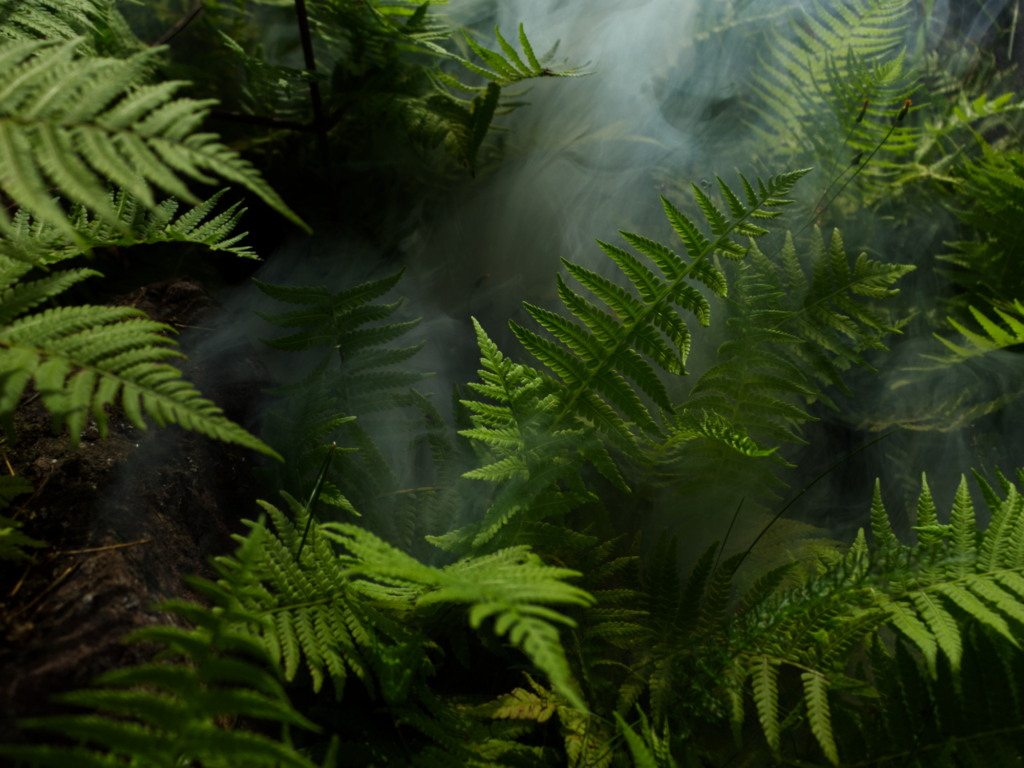Tom Titus

Just after entering this canyon cut deep into the heart of the Oregon Coast Range, I stopped to stare back toward the gap through which I had come. The December sky was finally exhausted. Her travel-worn gray cloak snagged on the teeth of a conifer ridge. Behind the rainless overcast, Sun began to relinquish another day. He pulled his tired arms toward his chest and curled into a solar fetal position, ready to reenter the womb of an early winter night. My trek into the canyon had begun late in the day during a season when daylight is a precious commodity in the Pacific Northwest. I usually arrive here in February. But an unspoken wildness was calling from within this shadowy crease in the mountains, echoing across a persistent gap in my knowledge that could be spanned only in December.
I knew the old road along the canyon bottom. Intermittent blackberry thickets threaded by deer trails. Rain-filled ruts where rough-skinned newts rested quietly on the bottom. I knew the abandoned track would end at the foot of a recent clearcut where trees had been dragged on a high lead cable to a landing on the eastern ridge. I knew the route would become a muddy trace forged by deer as they browsed through trailing blackberries and sprouts of vine maple. This afternoon the mud was embossed with the print of a doe. She was probably pregnant, her womb carrying twin fetuses arching away from one another like the two halves of her heart-shaped track. Other secrets were carried by the creek to my left, flushing turbid and full.
Beyond the clearcut rose an old forest. Needled branches of 200-year-old Douglas-fir intercepted the meager light of the rainy season. Beneath the towering giants cowered an understory of sword fern, salal, and vine maple making their peace with crumbs of leftover light. I was starved for brightness, too. Touching noses with the dimness, I tried to form my own peace with the dying day. But a subtle urgency crept in, an animal knowing that dogs me at the end of a winter afternoon far from the warm cabin. My pace quickened.
Turning left I plunged downhill toward the muted tumble of water. Wet fronds of sword fern and leathery salal leaves hissed against my rain pants. In a moment I was gazing down on the creek from a smooth gap in the lip of the streambank where otter hauled out. I descended to the water’s edge where the cloudy stream squeezed into a rattling rill. Planting my foot decisively on a midstream rock, I gained the other side with one more reaching step. Two more steps and I was atop the opposite bank. From here I could wander the flat floor of the canyon and watch the creek from above.
The stream had room to wiggle along the wide canyon bottom. It exercised this freedom by carving meanders through the giant trees. Inside the crooked elbows were quiet places where silty water paused on its downhill rush toward Smith River, dropping sand and pebbles onto miniature beaches. My eyes remained on the creek while I straddled and stepped over decaying carcasses of Douglas-fir and hemlock. Eventually, the stream pressed tightly against my side of the canyon, forcing me to cross again. A fallen alder spanned the channel, corralling the cloudy water into a still pool. I stepped onto the log, grateful for the gift of balance, grateful for the dim drippy rushing presence of this place.
And there it was, within arm’s reach. At first, only a white patch was visible in the water behind the log, a bleached scrap of brightness floating out of place in the hazy pool. I focused. The gray shadow of a coho salmon emerged. Its fungus-ridden tail rested against the log on which I stood. Surely the fish knew I was there. Coho are wary when they enter these tiny streams to spawn. They aren’t ready to be reduced into orange muscle, white bone, and black kidney that sustains raccoons and otters, provides a death feast for crayfish, then decays into elemental nitrogen that nourishes alder, willow, and red cedar.
Coho struggle against this tide of rejuvenating death until the last chapter in their cycling tale is written. They press on until their tattered tails have churned and rinsed the silt from spawning gravel and fertile eggs are pulsing in the unique chemistry of this stream. Their hope lies with fingerlings that flourish in shady pools, dart downstream to fatten on silvery saltwater baitfish, finally consummating their lives in a starving return to this forest. For the coho stretched just beyond my legs, the saga of its unerring journey into this filament of water was ending.
I don’t understand what happened next. Maybe the desire that drove me into this sunless wrinkle in the mountains was another gap, a disconnect between the fiber of my existence and the interconnected nerve net of this place, a synapse in need of filling in order to propagate an impulse. Maybe that chasm could be spanned only by the raw physicality of this coho. Or maybe my reaching need was just a predatory impulse, a yearning from my internal otter whose slick fur needed stroking, even though I had no intention of eating this fish. Then again, maybe when the muscles of otter and salmon are conjoined in a final furious struggle, their relationship becomes more intertwined and complex than a simple two-state, two-step connection between eater and eaten. Maybe their shared electricity bridges a fissure in their own knowledge. Who can say?
I wasn’t reasoning, only reaching down, gently encircling the ghostly base of that tail with my thumb and forefinger. The fish seemed shocked. It shook the ragged scythe of its body with a surprising burst of strength, cut my fingers loose, then sliced through the darkening pool to disappear into a watery incision of its own making. I teetered. The thrash of the escaping salmon burst up my arm, becoming adrenaline that flooded my synapses. Fight or flight? I chose none of the above. Instead, I remained motionless and allowed the energy of the fish to propagate through my own ecosystem of nerve and muscle.
The music of water trickled softly back, flushing away the chemical memory of the escaping salmon. For a liquid moment, the afterglow became the collective reflection from generations of coho who thrashed into this creek, their final prayer a small pile of fertile eggs, their death an endowment of disintegrating bodies that nourish the forest.
In that small sliver of time, I might have joined the salmon, given myself over to the waiting arms of the stream. But my story would have been unfinished. A scent of stalking darkness rose into my nose. Returning into my separate self, I fled the oncoming rush of nightfall.


